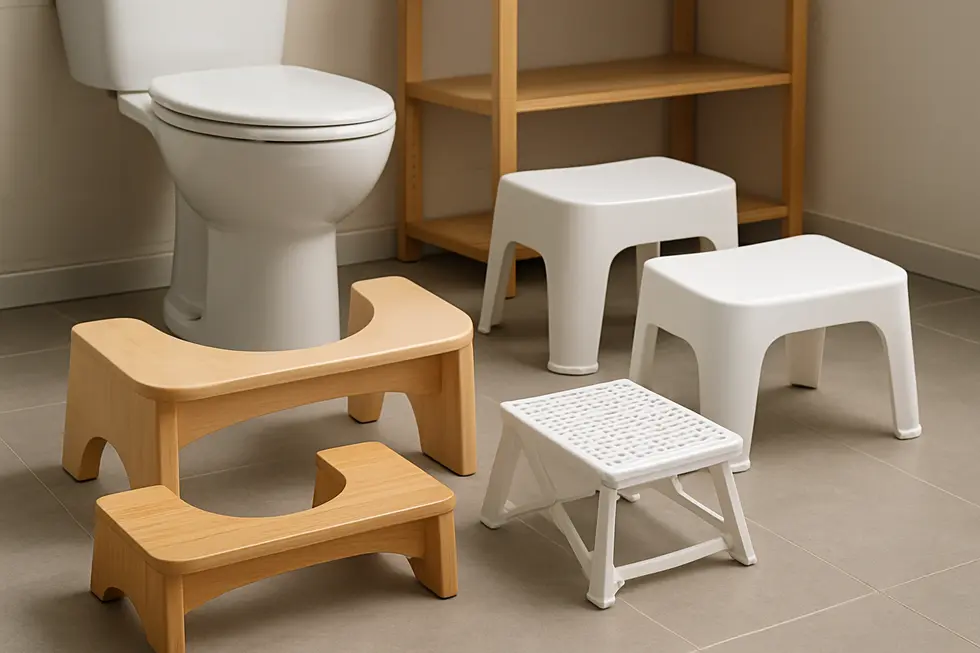Bidet Attachment, Toilet Stools
Build Your Own Toilet Stool: A DIY Guide to Comfort, Health, and Style
DIY Toilet Stool: Build Your Own for Comfort, Health, and Style
A DIY toilet stool can be an excellent addition to any bathroom, enhancing comfort and promoting better posture. By crafting your own, you have the freedom to choose materials and designs that complement your existing bathroom decor. Each chapter of this guide will help you on your journey from selecting the right materials and designing a functional structure to executing sturdy construction techniques. Additionally, you’ll explore various artistic finishes and even discover unconventional materials for innovative creations.
Crafting Your Ideal DIY Toilet Stool: Materials and Tools Guide
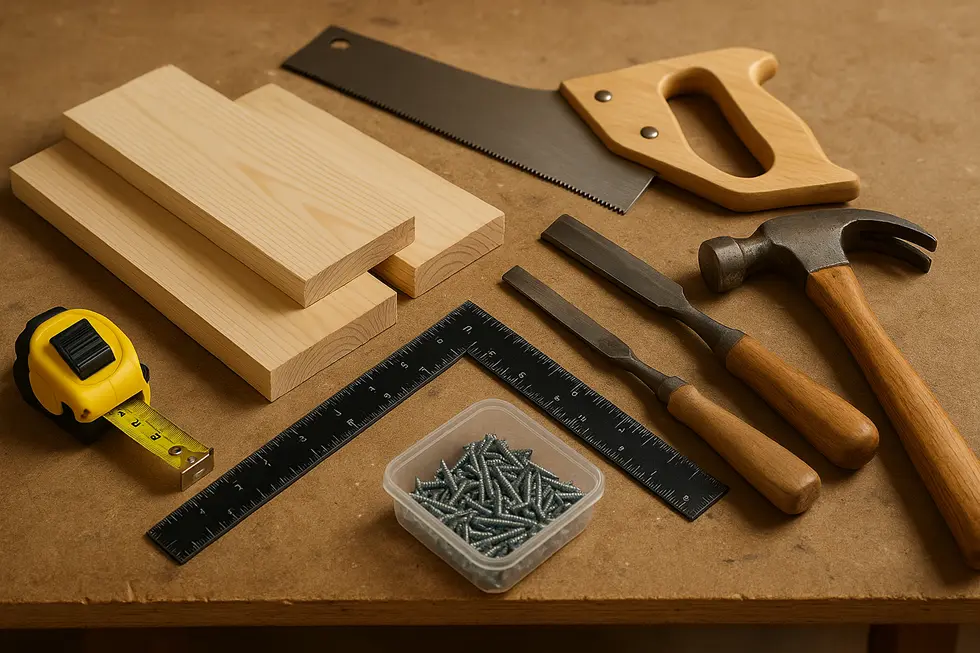
Building a DIY toilet stool is a creative endeavor that offers the flexibility to choose materials and designs tailored to your bathroom’s aesthetic. The foundation of your stool is often wood, with options ranging from plywood to solid wood, each providing a unique look and level of durability. To assemble the pieces, you’ll need screws, nails, and glue, ensuring the structure is sturdy. For a smooth finish, sandpaper is essential and, to enhance longevity, consider a protective finish such as paint or varnish.
Looking beyond traditional wood, materials like bamboo or recycled plastic can offer sustainability and a modern flair. Incorporating a cushion or non-slip surface can also enhance comfort and functionality.
Essential tools for this project include a saw—circular or handheld—for precise cuts, and a power drill for secure assembly. A hammer will aid in minor adjustments, while an orbital sander ensures a smooth touch. Accurate measurements are key, so keep a measuring tape handy, along with a level and square to ensure stability.
Safety cannot be overstressed; protect yourself with gloves, protective eyewear, and a dust mask. For those seeking a detailed plan, consider exploring this DIY Step Stool Plan for guidance that can be adapted to your toilet stool project.
Crafting Comfort: Design Principles for Your DIY Toilet Stool
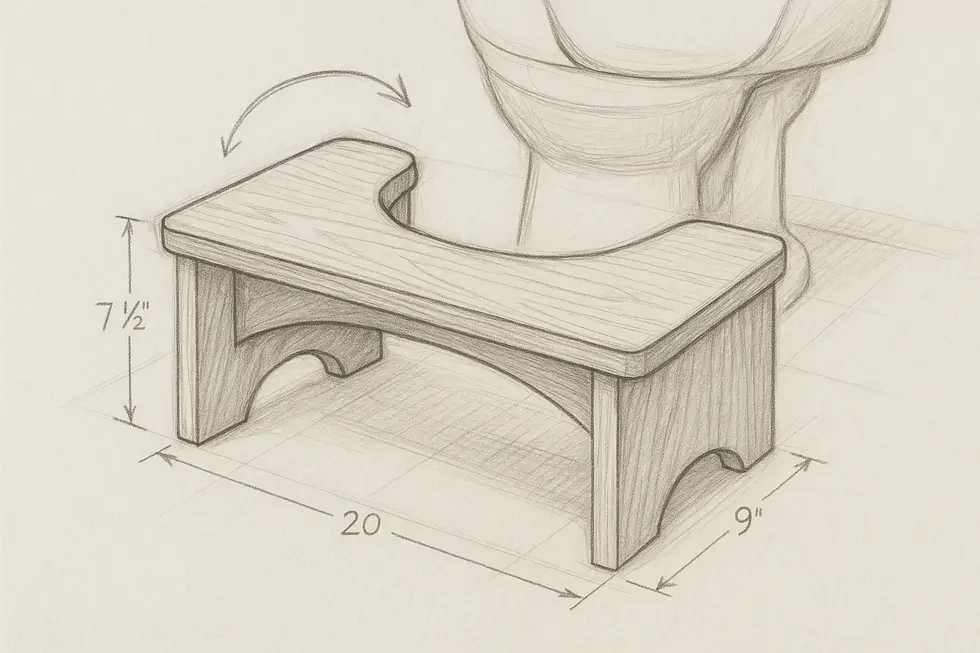
When embarking on the journey of creating a DIY toilet stool, understanding key design principles transforms a simple project into an ergonomic triumph. The primary ergonomic function focuses on fostering a natural squatting position—raising feet to align the colon, thereby easing the bowel movement process. Aim for a 35-degree knee elevation, ensuring comfort for various foot sizes.
Safety and stability come next. Whether you select wood or plastic, your stool must be able to withstand weight without sliding or toppling. Attaching non-slip materials such as rubber grips is crucial, especially for slick bathroom surfaces. Secure joints and smooth finishes will prevent accidents and ensure prolonged durability.
Space efficiency is another pivotal factor. Compact designs that nestle under the toilet when not in use provide a smart solution, especially in cramped spaces. Lightweight yet robust materials like treated wood or molded plastic maintain functionality with convenience.
To elevate the practical aspects of your stool, consider slight top surface curves for comfort and rounded edges for safety. With these principles in mind, your DIY toilet stool will not only be an asset to your bathroom but also enhance your overall well-being. Explore a guide on the best toilet stool height for further insights on optimizing the design.
Crafting a Durable DIY Toilet Stool: Techniques for Longevity and Stability
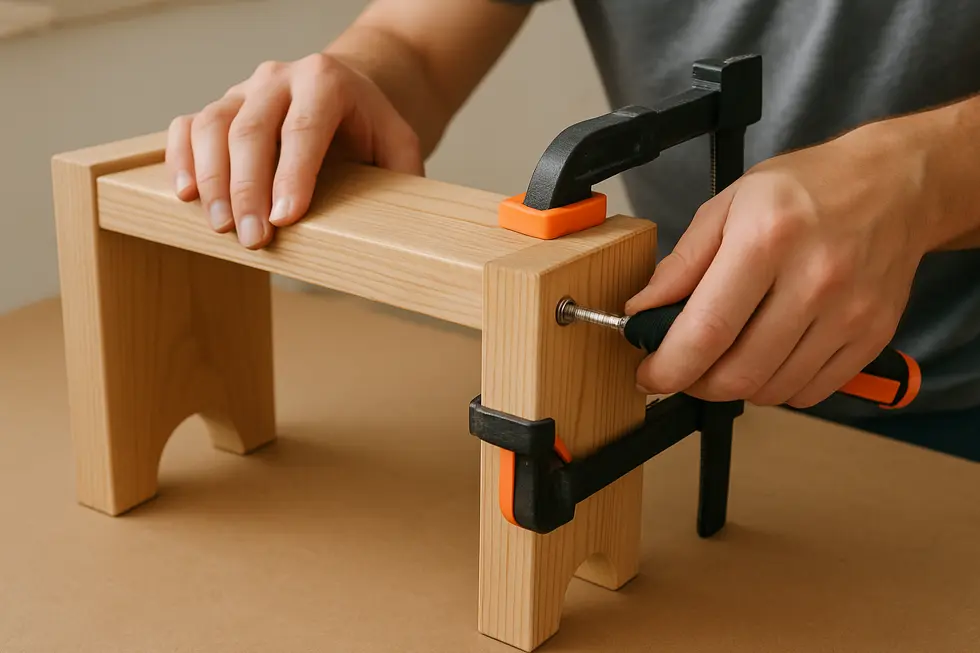
Building a sturdy DIY toilet stool requires thoughtful consideration of materials, design, and construction methods to ensure it stands the test of time in your bathroom. Material selection is a critical starting point. Opt for durable hardwoods like oak or maple, known for their strength and longevity, or consider bamboo, which offers natural water resistance—a vital feature for bathroom environments. Applying water-resistant finishes, such as sealants or varnishes, adds another layer of protection against moisture.
The design must align with both aesthetics and functionality, ensuring appropriate dimensions for comfort. A height between 7 to 10 inches is standard, providing ergonomic benefits by promoting a natural squatting position. Consider the footprint, ensuring it’s wide enough to provide stable support. Some may prefer adding a slight curve or angle on the top surface to accommodate better foot placement and comfort.
Joinery techniques are the backbone of a strong construction. Utilize butt joints fortified with wood glue and screws or dowels. Cross braces can further enhance the stool’s stability, allowing it to support substantial weight. For those interested in following precise plans, numerous online resources offer step-by-step guides with detailed material and tool lists to facilitate the construction process.
Finally, consider additional features like a two-step design for versatility, catering to both children and adults. With careful attention to these aspects, your DIY toilet stool will not only be sturdy but also a seamlessly integrated part of your bathroom decor. For those seeking height recommendations, this guide on toilet stool height provides further insights.
Elevate Your DIY Toilet Stool with Decorative Finishes
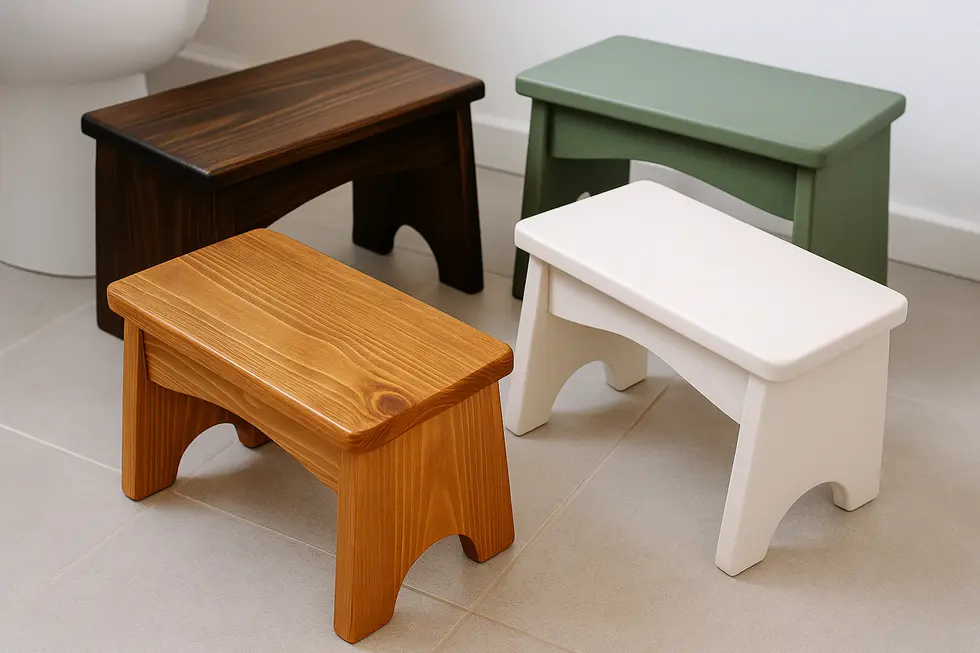
When crafting a DIY toilet stool, the decorative finish is where functionality meets style, allowing for creative expression while ensuring durability. Wood stain stands as a popular option, offering a variety of colors that can evoke rustic charm or modern elegance. Using a driftwood stain, for instance, not only imbues the stool with a weathered, vintage look but also works beautifully with different bathroom themes. Paired with a clear coat of matte polyurethane, the stool gains a protective barrier against moisture while maintaining a chic appearance.
For those who appreciate the natural allure of wood, sanding and refinishing presents an exceptional approach. This process involves delicately sanding the wooden surface to erase imperfections, thus bringing out the inherent patterns and hues of the material. Applying a finishing coat enhances these natural tones, making it ideal for stools repurposed from aged furniture.
Exploring creative ideas for small spaces opens up further customization avenues. Integrating repurposed materials or DIY techniques into your stool’s design can reflect a minimalist style or complement a themed decor. Platforms like TikTok offer abundant inspiration, showcasing unique and budget-friendly ways to transform your bathroom elements with creative flair. For more innovative ideas, you can explore TikTok Decor Ideas.
Creative Approaches to DIY Toilet Stools with Unique Materials
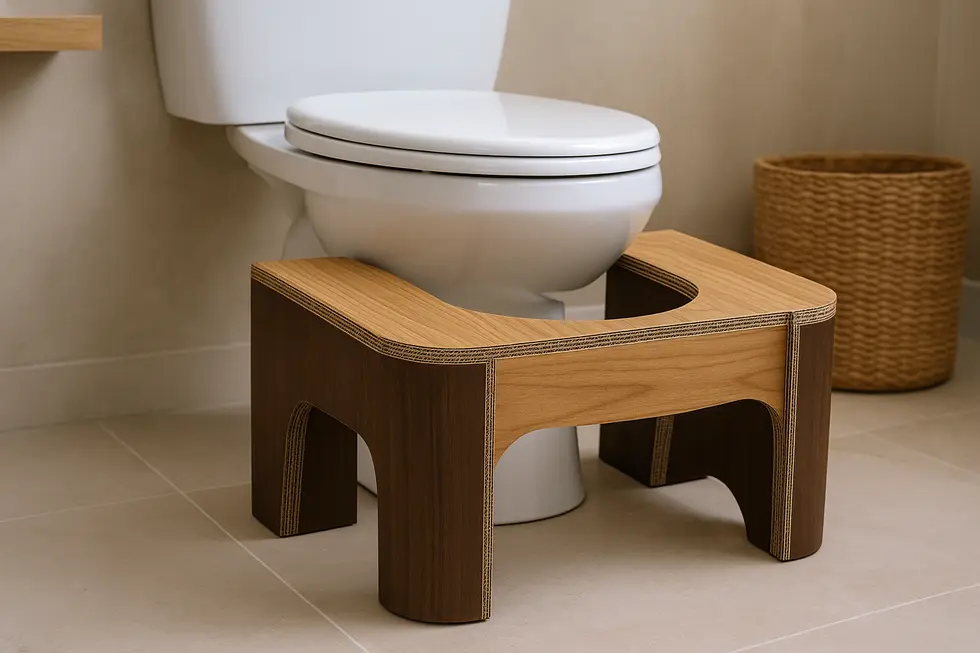
Exploring alternative materials for DIY toilet stools can open up a world of creativity and practical advantages. One popular choice among eco-conscious DIY enthusiasts is bamboo. Bamboo toilet stools boast natural durability and water resistance, offering both minimalist design and practical sturdiness.
Another inventive idea is using pool noodles for padding. This approach adds a layer of comfort to either the stool or a seat lift, making it an excellent choice for toddlers or elderly users who benefit from extra cushioning. Pool noodles are both cheap and customizable, allowing you to cut them to size for a snug fit without permanent alterations.
For those who appreciate foldable design, wooden stools made from materials like eucalyptus or teak are ideal. These options offer elegance and portability, folding neatly under the toilet or flat for storage, thus improving ergonomics without sacrificing space.
Fans of upcycling can repurpose scrap wood or pallets to create budget-friendly, rustic-style stools. Lastly, using PVC pipes paired with foam cushions creates lightweight and moisture-resistant stools, allowing for custom heights and shapes tailored to individual ergonomic needs.
Incorporating sustainable or everyday materials into your DIY projects not only enhances bathroom functionality but also personalizes your space in a unique way. For more insights on toilet stool designs, check out resources from Squatty Potty.
Final Thoughts
Building a DIY toilet stool not only provides functional benefits but also gives you a rewarding opportunity to tailor your bathroom environment to your taste. From choosing materials to final finishing touches, each step allows you to create a piece that is both practical and reflective of personal style. By exploring different designs and materials, you can innovate and adapt to any space constraints or aesthetic preferences.
Experience a new standard of clean with PEGABidet—designed for comfort, safety, and independence. Join thousands who trust us to make personal care simple and dignified. Contact us at contact@pegabidet.com.
About Us
PEGABidet is a brand owned by L.A NEXTGEN LLC, based in California. We design intuitive, hygienic, and accessible bathroom solutions that prioritize safety, dignity, and independence. Our mission is to make personal care effortless and empowering for people at every stage of life.

